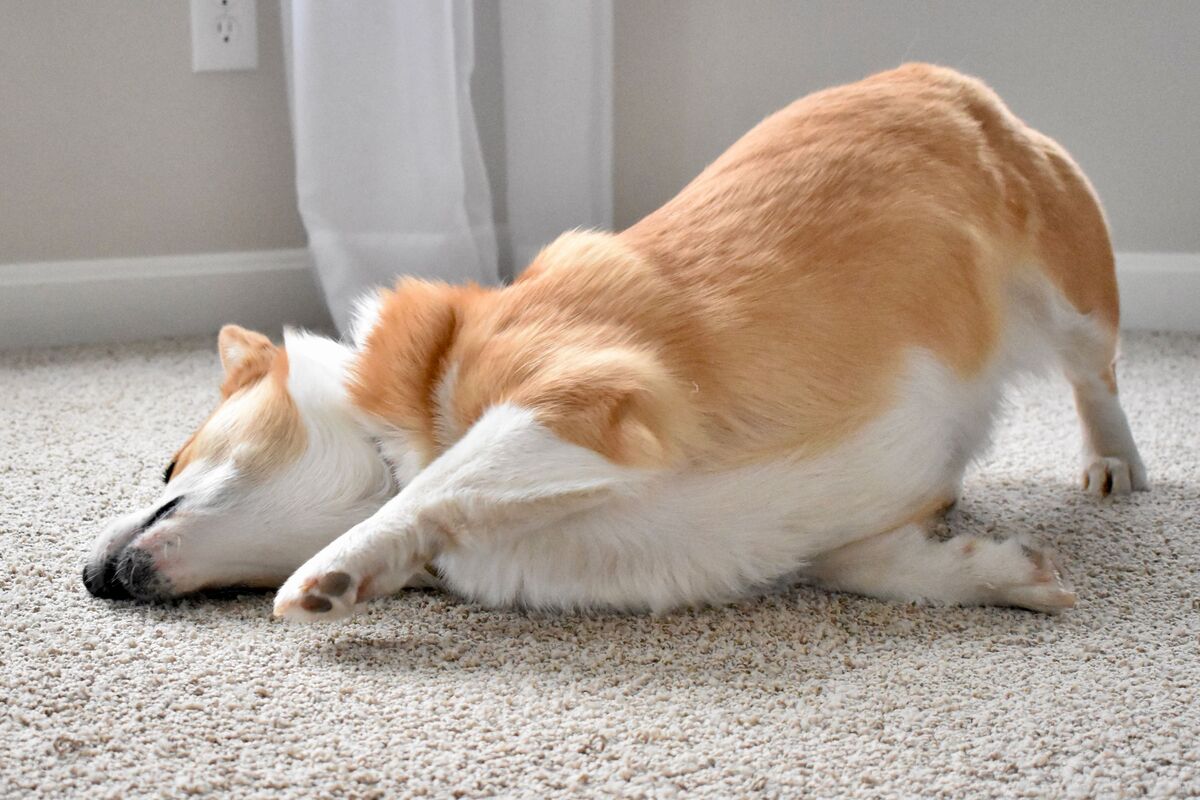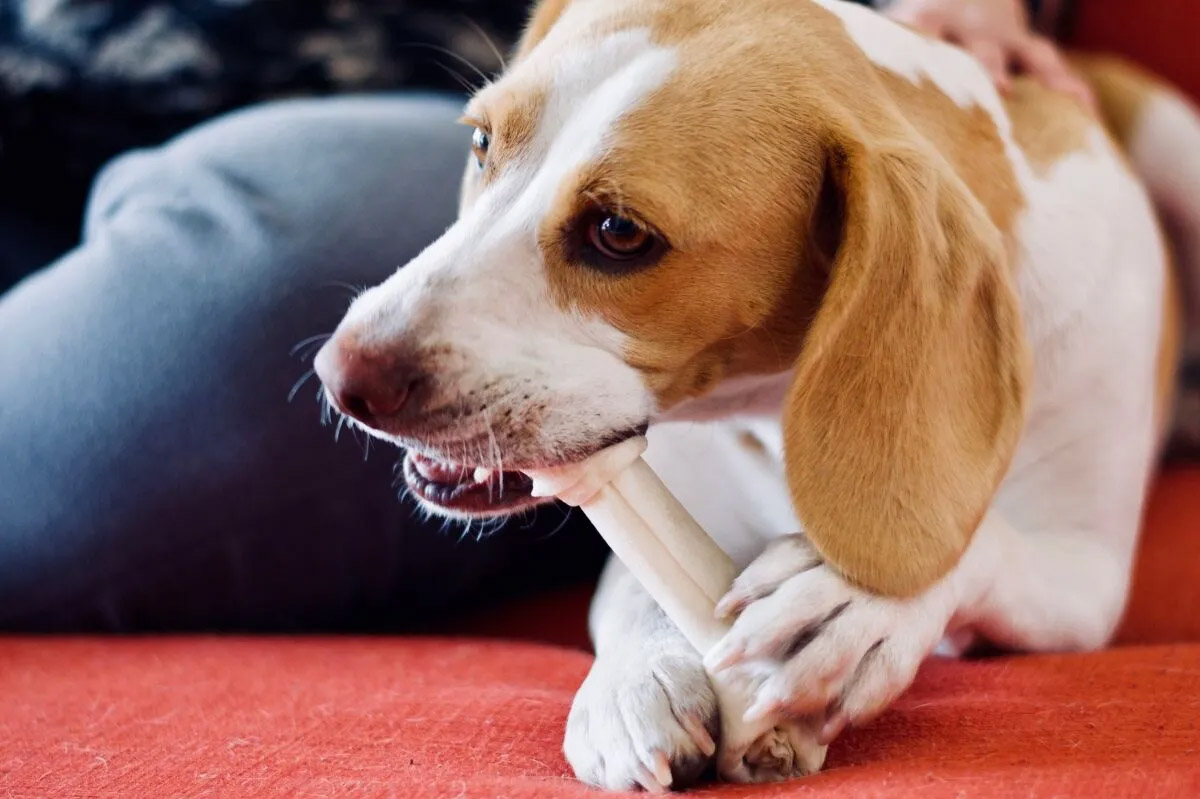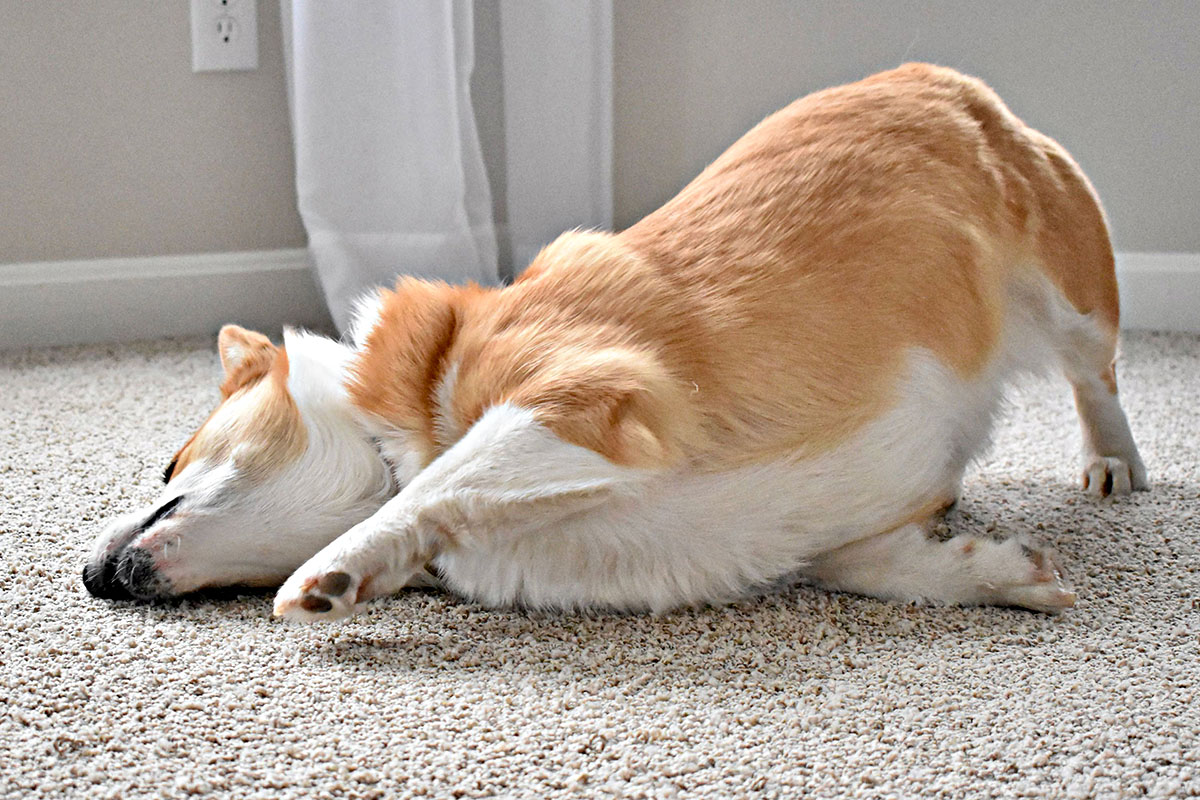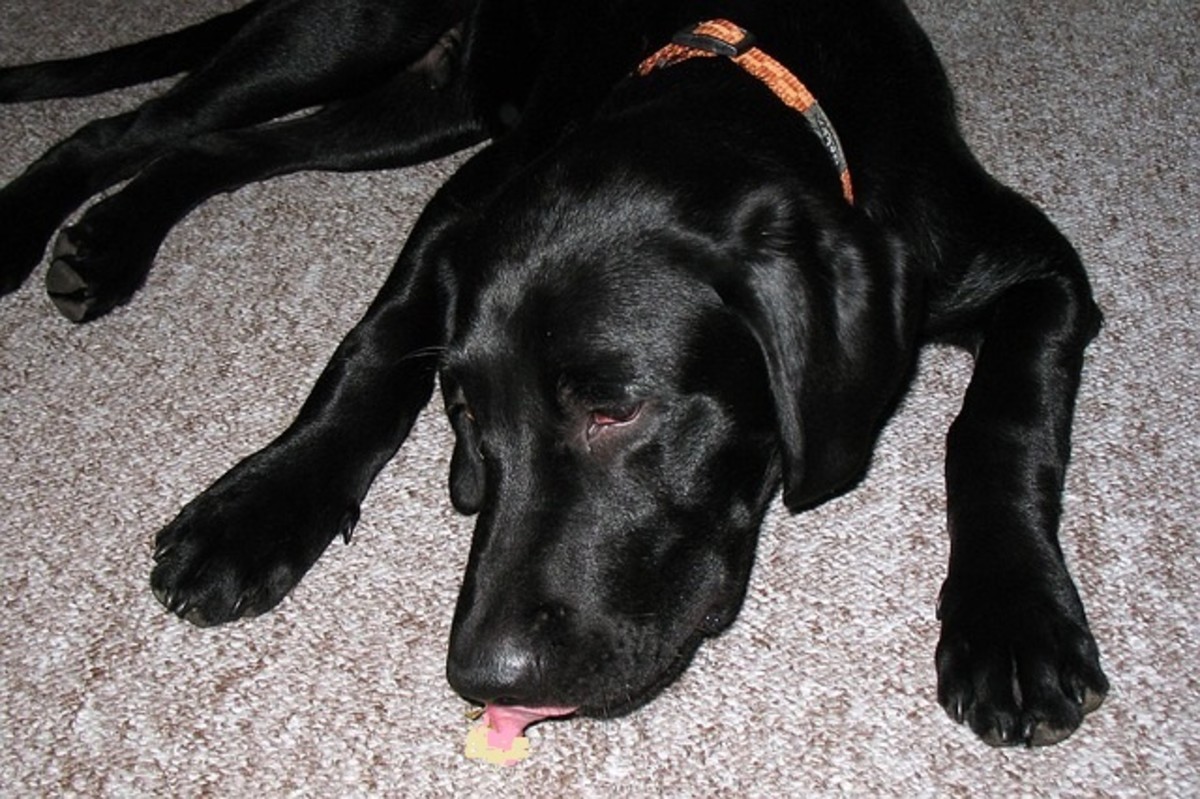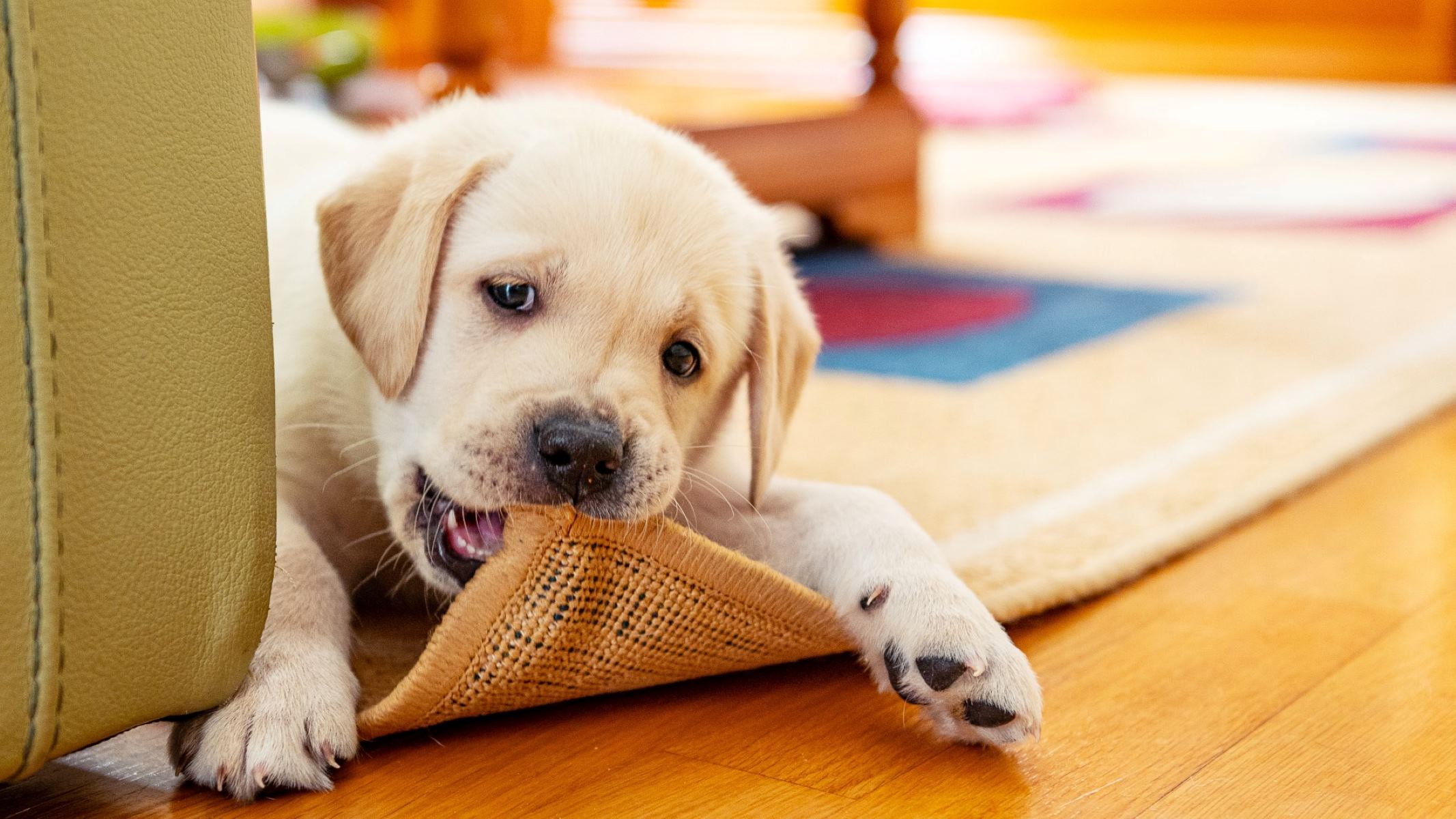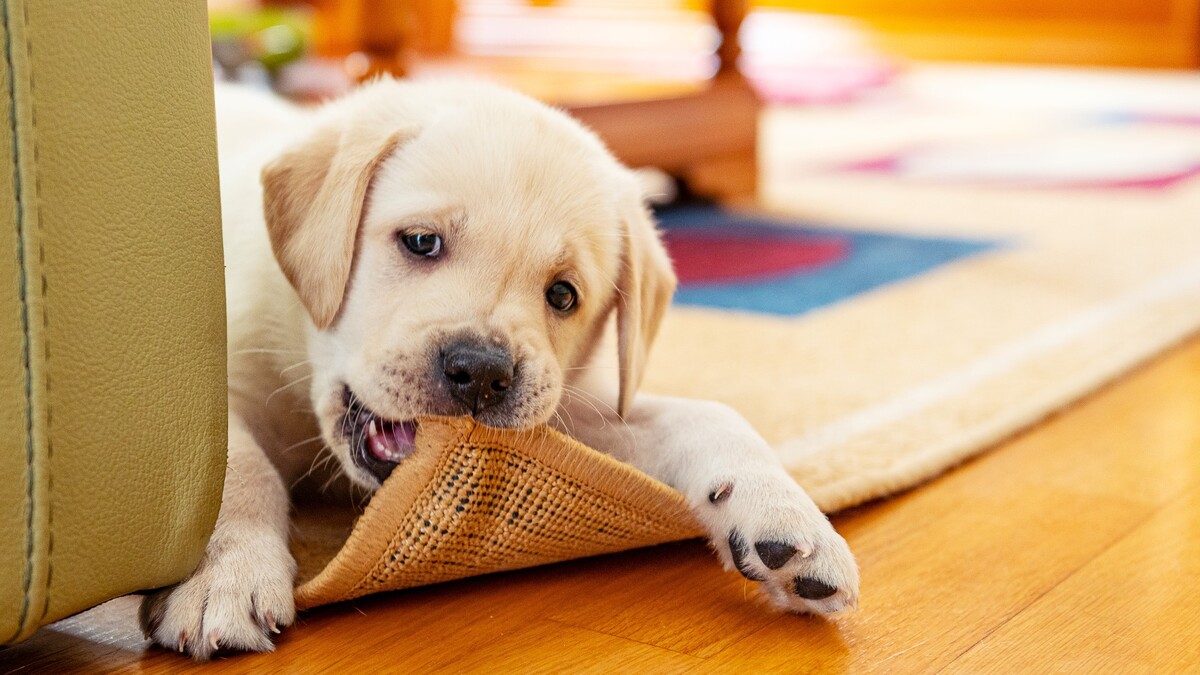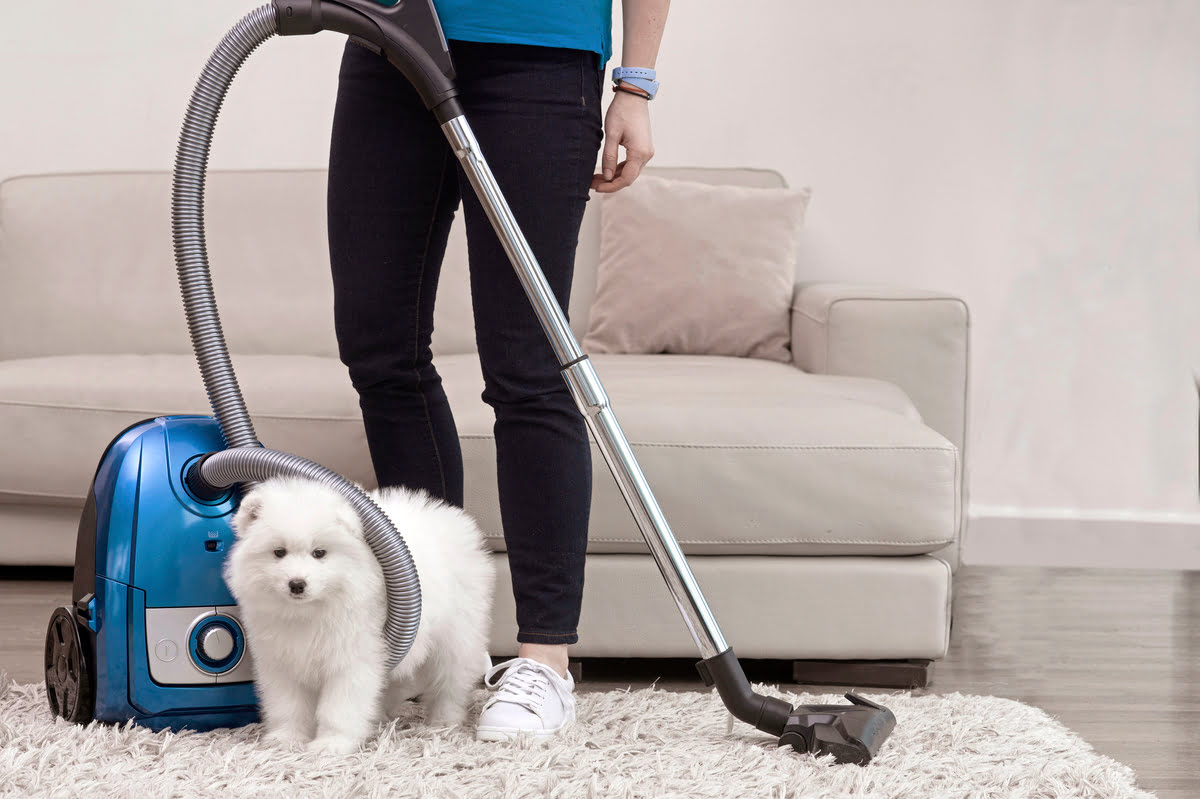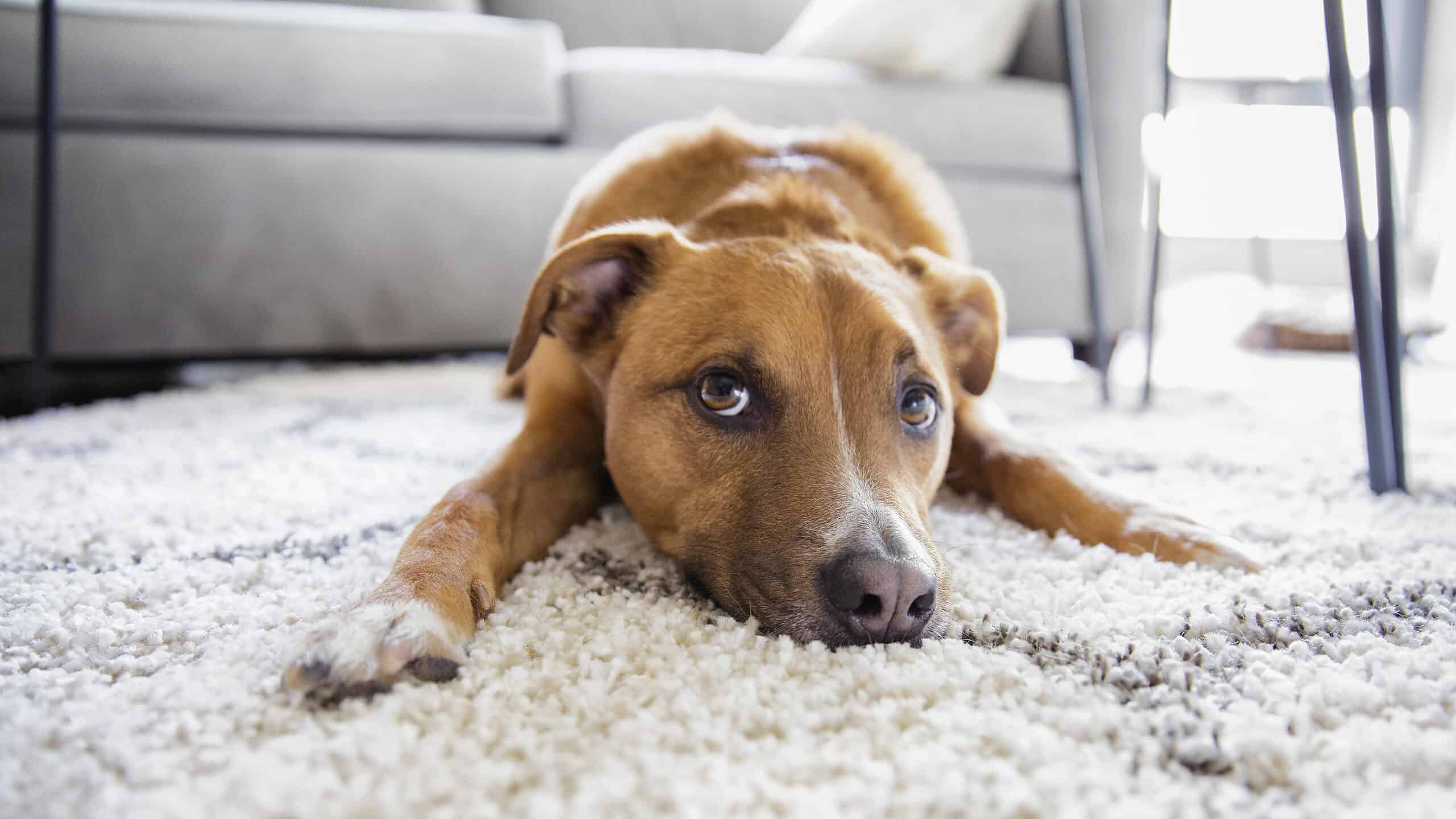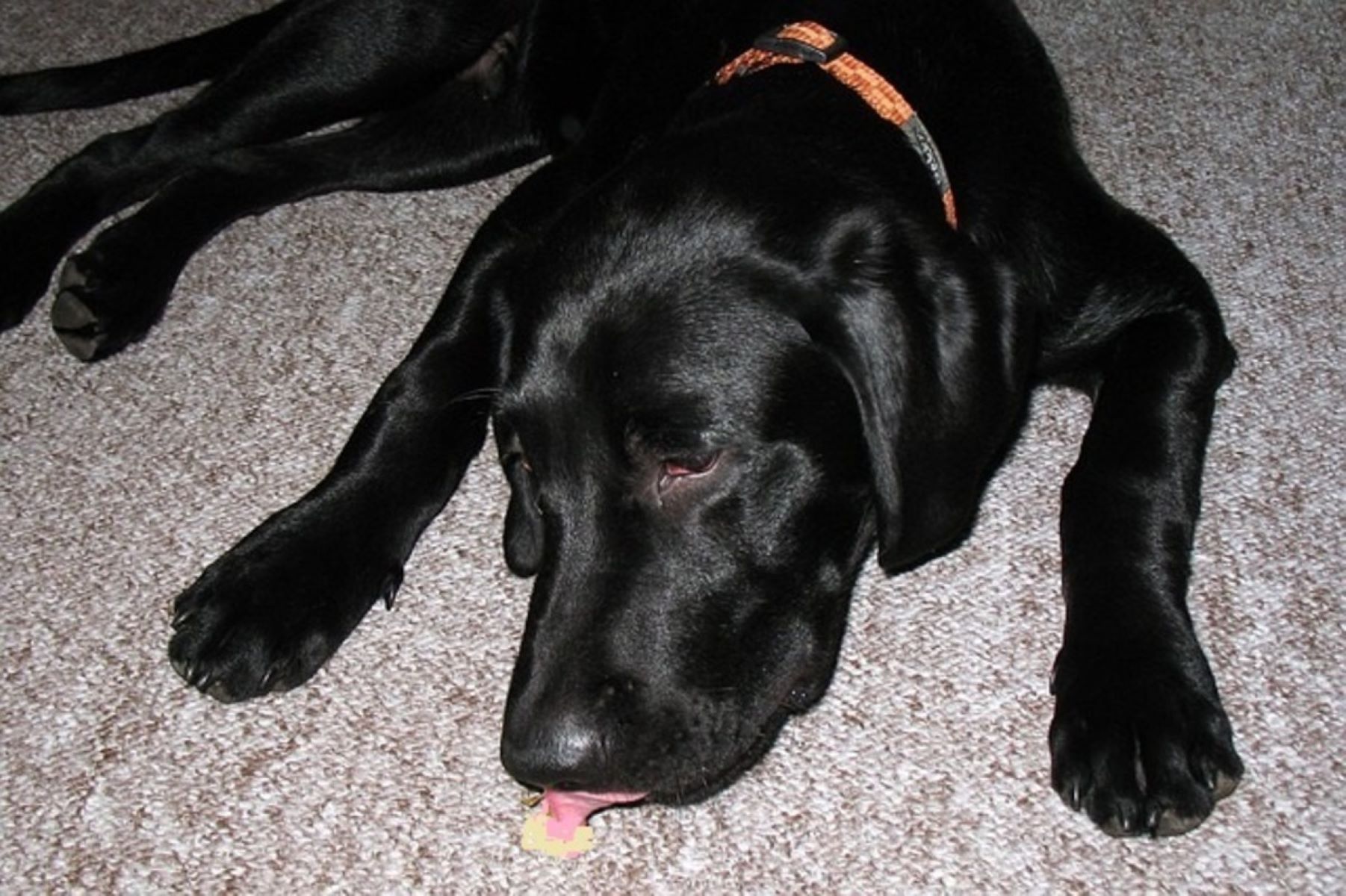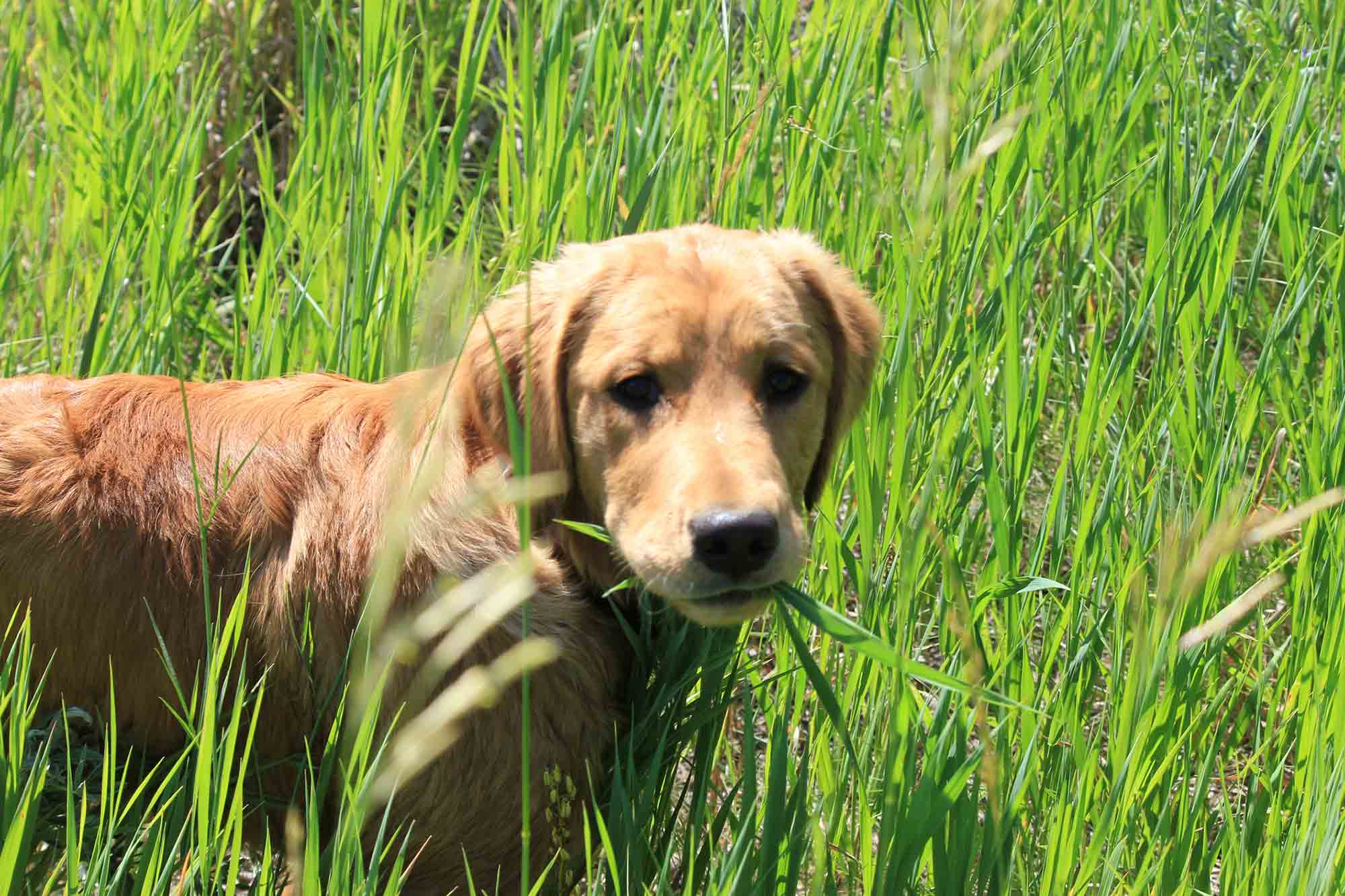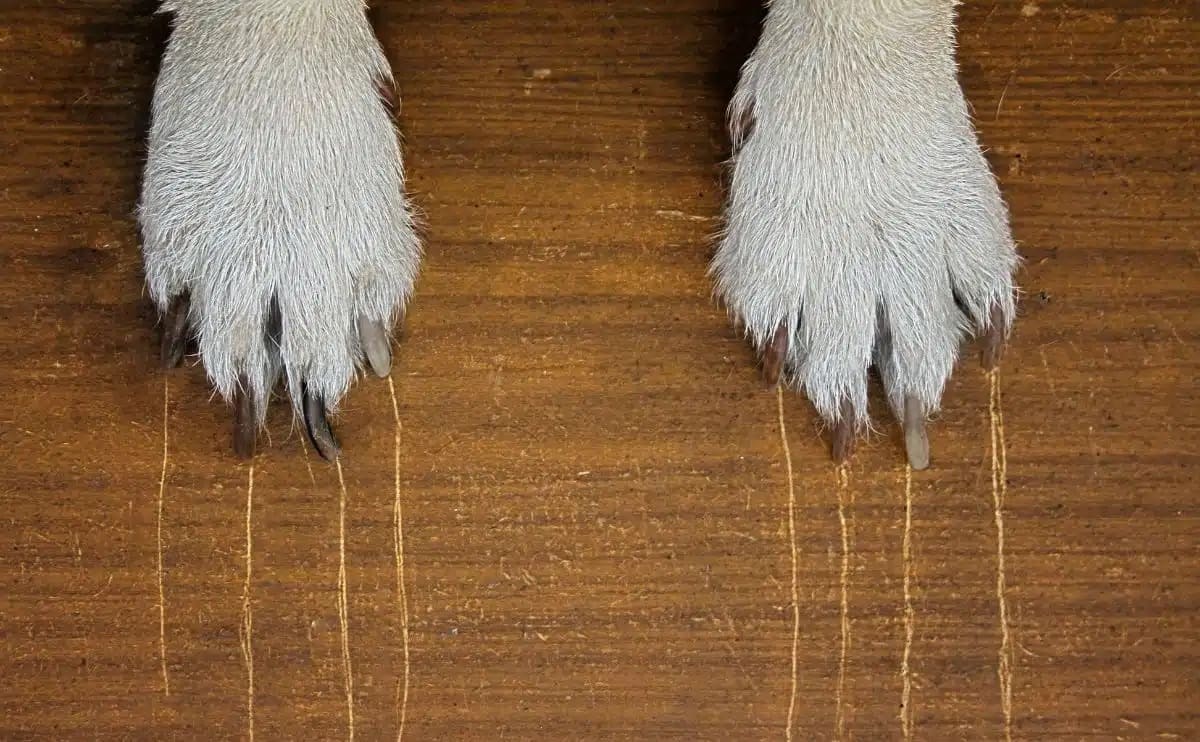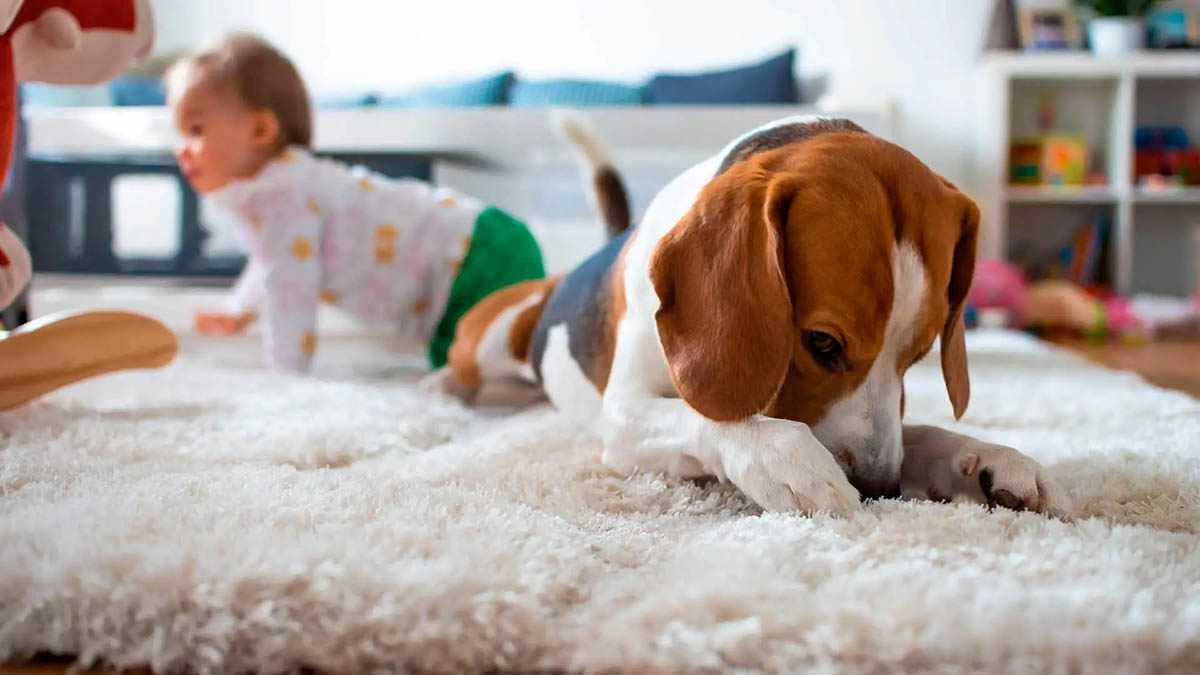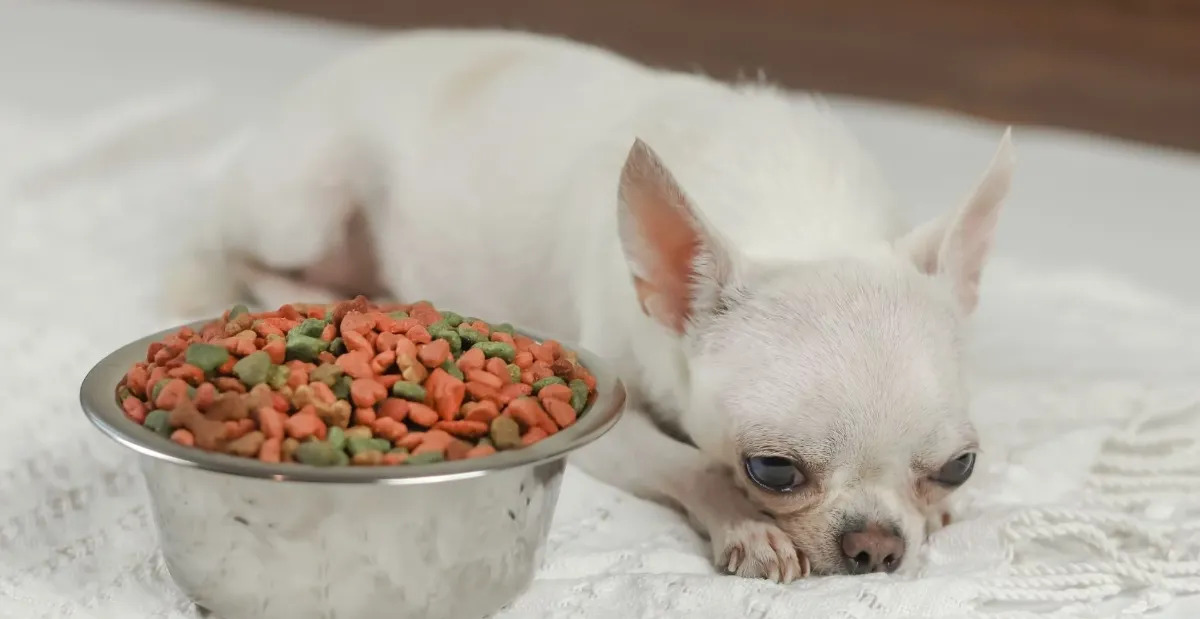

Articles
Why Do Dogs Take Food To Carpet
Published: December 7, 2023
Discover why dogs have a peculiar habit of taking food to the carpet in this informative article. Learn about the reasons and how to curb this behavior.
(Many of the links in this article redirect to a specific reviewed product. Your purchase of these products through affiliate links helps to generate commission for Storables.com, at no extra cost. Learn more)
Introduction
Have you ever wondered why dogs have a tendency to take their food to the carpet? It’s a common behavior observed in many dogs, and it can be quite puzzling to understand why they do it. But fear not, there are actually several reasons behind this peculiar habit.
Dogs, being descendants of wolves, have certain instinctual behaviors that have been passed down through generations. These behaviors served a purpose in the wild, and although they may seem odd in a domestic setting, they still exist in our beloved canine friends.
In this article, we will delve into the natural instinct of dogs, the behavioral reasons for taking food to the carpet, the environmental factors that encourage this behavior, and the psychological explanations behind it. We will also address whether this behavior is a cause for concern and provide tips on how to prevent it.
So, let’s unravel the mystery of why dogs take their food to the carpet!
Key Takeaways:
- Dogs take food to the carpet due to their natural instinct to protect their meal, seek comfort, and establish control. Understanding their motivations can help create a harmonious mealtime experience.
- Preventing dogs from taking food to the carpet involves creating a designated feeding area, using appropriate feeding tools, practicing positive reinforcement, and seeking professional guidance when needed. Consistency and patience are key in training.
Read more: Why Do Dogs Dig In The Carpet
The Natural Instinct of Dogs
To understand why dogs take their food to the carpet, we must first look at their natural instinct. Dogs, as descendants of wolves, have a strong instinct to protect and hide their food. In the wild, this instinct served a crucial purpose – it ensured the survival of the pack.
Wolves, from which domestic dogs are descended, are pack animals. They hunt in groups and share their kills with other members of the pack. However, they also face competition from other predators who may try to steal their food. To minimize the risk of losing their meal, wolves instinctively carry their food away from the kill site and into a more secluded area.
This instinct has been retained in domesticated dogs to some extent. Even though they no longer need to defend their food from other predators, the instinct to protect and hide their food remains deeply ingrained in their behavior.
So, when you see your dog taking their food to the carpet, they are simply acting on their instinctive drive to protect their meal. It’s their way of creating a safe space where they can consume their food without any perceived threats.
It’s important to note that not all dogs exhibit this behavior. Some may be more prone to it due to their genetic makeup or individual personality traits. Additionally, certain breeds, such as terriers or hound dogs, may have a stronger prey drive, which can influence their behavior around food.
Now that we understand the natural instinct of dogs, let’s explore the various behavioral reasons for their food-to-carpet habit.
Behavioral Reasons for Taking Food to Carpet
There are several behavioral reasons why dogs take their food to the carpet. Understanding these reasons can help us decipher the motive behind this behavior and address it effectively.
1. Resource Guarding: Some dogs exhibit possessive behavior when it comes to their food. They may take their food to the carpet to create a perceived boundary and guard it from potential threats. This behavior is more common in dogs who feel insecure or have had previous negative experiences around mealtime.
2. Comfort and Familiarity: Dogs are creatures of habit and seek comfort in familiar environments. By taking their food to the carpet, they create a familiar spot that they associate with mealtime. It provides them with a sense of security and can make the eating experience more enjoyable for them.
3. Cleanliness: Dogs are generally clean animals and prefer to have a designated area for eating. Taking their food to the carpet can be a way for them to avoid making a mess on a hard surface like tile or wood. They may see the carpet as a convenient place to eat without worrying about spills or crumbs.
4. Control and Dominance: In some cases, dogs may take their food to the carpet as a way to assert dominance or control over their environment. By choosing where to eat, they establish their position within the household hierarchy. This behavior is more commonly seen in dogs with a strong alpha personality or those who have not been properly trained in food manners.
It’s important to remember that each dog is unique, and their motivations may vary. Some dogs may exhibit multiple behavioral reasons simultaneously, while others may show only one. Observing your dog’s behavior and consulting with a professional trainer or veterinarian can help you determine the underlying cause behind the food-to-carpet habit.
Now, let’s explore the environmental factors that can encourage food placement on carpets.
Environmental Factors that Encourage Food Placement on Carpets
While dogs’ natural instincts and behavioral reasons play a significant role in their food-to-carpet behavior, there are also environmental factors that can encourage this habit. Understanding these factors can help us address them and provide alternative solutions.
1. Feeding Area Design: The design and layout of the feeding area can contribute to dogs taking their food to the carpet. If the feeding area is close to the carpeted area, dogs may naturally move their food onto the carpet while eating. Consider repositioning the feeding area away from the carpet or using a feeding mat or tray that can contain any spills or mess.
2. Slippery Surfaces: Dogs may find it challenging to eat on slippery surfaces such as tile or hardwood floors. The lack of traction can cause their bowls to slide, making it uncomfortable for them to eat. As a result, they may prefer the stability and grip provided by the carpet. Adding a non-slip mat or using a weighted bowl can help improve their eating experience on these surfaces.
3. Feeding in Multi-Pet Homes: In households with multiple pets, dogs may feel the need to protect their food from other pets. They may take their food to the carpet to create a safe and secluded space where they can eat without interruptions or competition. Consider feeding pets in separate areas to alleviate any potential tension and reduce the need for food relocation.
4. Previous Associations: Dogs have a remarkable memory and can form associations with specific locations or surfaces. If they have had positive experiences with eating on the carpet in the past, they may continue the behavior as it becomes their preferred feeding spot. Breaking this association may require gradual training and redirection to a designated eating area.
By addressing these environmental factors, we can minimize the likelihood of dogs taking their food to the carpet. Providing a suitable feeding area and making adjustments based on their preferences will create a more pleasant eating environment for both you and your furry friend.
Next, let’s explore the psychological explanations for the food-to-carpet behavior in dogs.
To prevent your dog from taking food to the carpet, try using a slow feeder bowl or puzzle toy to make mealtime more engaging and slow down their eating. This can reduce the likelihood of them carrying food away to eat elsewhere.
Psychological Explanations for Food-to-Carpet Behavior
While the natural instincts and behavioral factors play a significant role in why dogs take their food to the carpet, there are also psychological explanations behind this behavior. Understanding these psychological factors can provide further insights into why dogs exhibit this peculiar habit.
1. Comfort and Security: Dogs are creatures of habit and seek comfort and security in familiar environments. By taking their food to the carpet, they create a sense of familiarity and security during mealtime. The soft texture of the carpet can provide them with physical comfort, leading to a more relaxed and enjoyable eating experience.
2. Stress Relief: Dogs may also take their food to the carpet as a means of stress relief. The act of relocating their food and eating in a different area can provide a temporary escape from any stressful situations or stimuli present in the surroundings. It can serve as a coping mechanism that helps them feel more at ease and in control.
3. Bonding and Attachment: Dogs are social animals and highly value their relationship with their human companions. Taking their food to the carpet may be a way for them to bond with their owners. By bringing their meal to a shared space, such as the living room carpet, they are seeking companionship and interaction while enjoying their food.
4. Attention-Seeking Behavior: Some dogs may exhibit the food-to-carpet behavior as a means of seeking attention. If they have learned that this behavior elicits a response from their owners, such as scolding or even positive reinforcement, they may continue to repeat it to gain attention and interaction.
It’s important to consider the individual personality and history of each dog when analyzing the psychological factors behind their food-to-carpet behavior. Some dogs may exhibit one or more of these psychological motivations, while others may have different underlying reasons unique to their circumstances.
Understanding the psychological explanations for this behavior can help us approach it with empathy and address any potential underlying issues that may be causing distress or discomfort for our furry friends.
Now, let’s address the question of whether food placement on carpet is a cause for concern.
Read more: Why Do Dogs Roll Around On A Carpet
Is Food Placement on Carpet a Cause for Concern?
If your dog is exhibiting the behavior of taking food to the carpet, you may be wondering whether it is a cause for concern. In most cases, food placement on the carpet is a natural behavior and does not pose any significant issues. However, there are a few factors to consider.
1. Hygiene: One potential concern with food placement on the carpet is hygiene. Carpets can be more challenging to clean than hard surfaces, and food particles can get lodged in the fibers, leading to potential odors or attracting pests. Regular vacuuming and spot cleaning can help mitigate these issues and maintain a clean living environment.
2. Resource Guarding: If your dog displays possessive behavior or becomes defensive when approached while eating on the carpet, it may indicate resource guarding issues. This can be a cause for concern, as it may lead to aggression towards humans or other pets. If this behavior becomes problematic or escalates, it is recommended to seek guidance from a professional dog trainer or behaviorist.
3. Ingesting Harmful Substances: Some dogs may have a habit of picking up food from the carpet and swallowing it quickly. This can be a cause for concern if the carpet contains any substances that are harmful to dogs, such as cleaning chemicals or small objects. Ensuring a clean and safe environment can help minimize the risk of accidental ingestion.
4. Impact on Eating Habits: If your dog consistently prefers to eat on the carpet and refuses to eat from their designated bowl or feeding area, it can disrupt their eating habits and may lead to inconsistent meal times or difficulty during feeding. In such cases, it may be beneficial to gradually transition them back to eating in a designated space to establish a routine.
Ultimately, whether food placement on the carpet is a cause for concern depends on the specific circumstances and the individual dog. If you are unsure or have any concerns about your dog’s behavior or well-being, consulting with a veterinarian or professional dog trainer can provide valuable insights and guidance tailored to your dog’s needs.
Now that we’ve examined the potential concerns surrounding food placement on the carpet, let’s explore some proactive measures to prevent this behavior.
How to Prevent Food-to-Carpet Behavior
If you would like to prevent your dog from taking food to the carpet, there are several proactive measures you can take. By addressing the underlying reasons behind this behavior and implementing training techniques, you can encourage your dog to eat in designated areas and establish a healthier mealtime routine.
1. Create a Designated Feeding Area: Set up a specific area in your home for feeding your dog. This could be a corner of the kitchen, a designated room, or a feeding station. Make sure this area is easily accessible and away from high-traffic areas. By consistently feeding your dog in this designated space, you can help them associate that area with mealtime.
2. Use Appropriate Feeding Tools: Invest in dog bowls or feeding mats that are designed to prevent spills or slippage. Look for bowls with non-slip bases or consider using elevated feeding stations, which can also aid in improving your dog’s digestion. These tools can create a more comfortable and stable eating environment on hard surfaces.
3. Practice Positive Reinforcement: Reward your dog when they eat in the designated feeding area. Offer verbal praise, treats, or a favorite toy to reinforce the desired behavior. Positive reinforcement can help your dog understand that eating in the designated area is rewarding and reinforce the habit.
4. Gradual Transition: If your dog is already accustomed to eating on the carpet, you may need to transition them slowly to the designated area. Start by placing their food bowl near the carpet and gradually move it closer to the desired feeding area over time. This gradual transition will help them adjust to the new location without causing stress or resistance.
5. Mealtime Routine: Establish a consistent mealtime routine for your dog. Dogs thrive on routine and predictability, so feeding them at the same times each day can help them feel more secure and reduce the need to take food to the carpet. Stick to regular feeding schedules and avoid leaving food out for prolonged periods.
6. Seek Professional Guidance: If your dog’s food-to-carpet behavior persists or is causing concern, consider seeking guidance from a professional dog trainer or animal behaviorist. They can assess the situation, provide tailored advice, and address any underlying behavioral issues that may be contributing to the behavior.
Remember, patience and consistency are key when training your dog to prevent food-to-carpet behavior. With time and proper training techniques, you can help your dog develop healthier eating habits and create a more controlled mealtime environment.
Let’s wrap up our exploration of dogs taking food to the carpet.
Conclusion
Dogs taking their food to the carpet can be a puzzling behavior to understand, but it is rooted in their natural instincts, behavioral factors, and environmental influences. Understanding the reasons behind this behavior allows us to address it effectively and create a more harmonious mealtime experience for both dogs and their owners.
We learned that dogs have a natural instinct to protect and hide their food, a behavior inherited from their wolf ancestors. Behavioral factors such as resource guarding, seeking comfort and familiarity, cleanliness, and the need for control can also contribute to this behavior. Additionally, environmental factors like feeding area design, slippery surfaces, multi-pet households, and previous associations play a role in encouraging food placement on carpets. Psychological factors such as seeking comfort and security, stress relief, bonding, and attention-seeking behavior can further drive this behavior.
While food placement on the carpet is generally not a cause for concern, it’s important to address potential hygiene issues, resource guarding, ingestion of harmful substances, and any impact on eating habits. Preventive measures like creating a designated feeding area, using appropriate feeding tools, practicing positive reinforcement, gradual transition, establishing a mealtime routine, and seeking professional guidance when needed can help prevent this behavior and create a healthier mealtime routine for your dog.
By understanding the motivations behind dogs taking their food to the carpet and implementing proactive strategies, we can promote a positive and enjoyable mealtime experience for our furry friends. Remember to be patient, consistent, and considerate of your dog’s individual needs and personality throughout the training process.
So, the next time you see your dog taking their food to the carpet, you can approach it with a better understanding and work towards creating a mealtime environment that meets their needs while maintaining a clean and harmonious living space.
Frequently Asked Questions about Why Do Dogs Take Food To Carpet
Was this page helpful?
At Storables.com, we guarantee accurate and reliable information. Our content, validated by Expert Board Contributors, is crafted following stringent Editorial Policies. We're committed to providing you with well-researched, expert-backed insights for all your informational needs.
